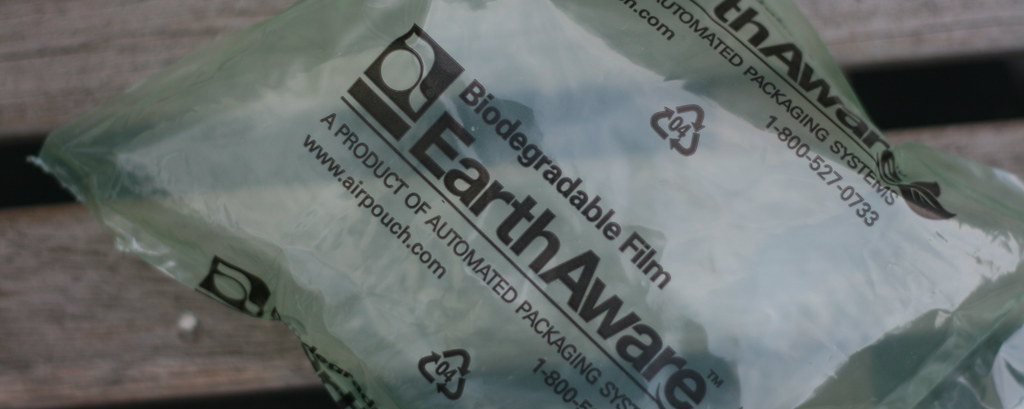by Tiffany Liang
Plastics are undeniably useful…and undeniably bad for the environment. While many environmentally-conscious people have made the switch to cotton bags and metal straws, other substances have a difficult time competing with the convenience, cost-effectiveness, and versatility of plastics.
Biodegradable plastics offer a promising compromise: they have all the useful characteristics of plastics without the environmental consequences. However, they’re not exactly the environmental solution advertised ––at least not yet. A 2018 study published by the American Chemical Society was able to achieve “commercially functionable” biodegradable plastic blends, which are of comparable functionality to conventional plastics on the market. However, the study also found that most biodegradable plastic blends require careful management to properly decompose, such as through industrially controlled composting and anaerobic digestion by microorganisms that decompose substances without oxygen.
The study tested six polymers, most of which are used in packaging material—polylactic acid (PLA), polyhydroxybutyrate (PHB), polyhydroxyoctanoate (PHO), poly(butylene succinate) (PBS), thermoplastic starch (TPS), and polycaprolactone (PCL)—and their blends. Scientists observed their biodegradation in seven different environments, both controlled (industrial composting, anaerobic digestion, home composting) and uncontrolled (marine, fresh water, aquatic anaerobic digestion, soil), to gain a realistic view of their potential environmental impact and how to properly deal with such waste.
In addition to the biodegradation tests, the polymers were also tested for “usability”, or how they would fare in practical applications in the real world. These tests include calculations of ultimate tensile (tension) strength, breaking strength, elongation at break, and toughness value. Scientists found that blending polymers helped achieve better characteristics. For example, blending two polymers, PCL and PLA, allowed the resulting blend to be more flexible. In addition, this blend is home-compostable while PLA by itself is not.
The results of biodegradation tests revealed that the majority of the tested bioplastics failed to meet national and international biodegradation standards in soil and water. These substances could potentially biodegrade on time scales of 1 month, 63 years, or even forever (no biodegradation) at all. This means that if bioplastics are not properly disposed of, they could easily end up as plastic pollutants like normal plastics.
However, most of the bioplastics successfully meet the biodegradation standards through high heat anaerobic digestion, which produces carbon dioxide and methane biogas in the process. But wait, aren’t those greenhouse gases? Yes, but the study mentions that the biogas can then be combusted to create sustainable energy. While it’s great that most bioplastics are able to degrade this way, it is not a method that consumers can easily do at home nor is it a process that would commonly happen in nature.
Clearly, scientists still have a long way to go before achieving the ideal bioplastic, which balances usability and biodegradability. While the study found that blending polymers can help produce desirable characteristics, scientists may have to explore different approaches to achieve a bioplastic that can biodegrade in most environment types.
In the meantime, especially with environmental scientists estimating that by 2050 the weight of plastic in the ocean will surpass that of fish, and the fact that plastic can take up to 1,000 years to decompose, it more important for us as consumers to take responsibility for our consumption by reducing plastic use and properly disposing, or recycling, plastics.
Citations:
Narancic, T., Verstichel, S., Chaganti, S.R., Morales-Gamex, L., Kenny, S.T., De Wilde, B., et al. (2018). Biodegradable Plastic Blends Create New Possibilities for End-of-Life Management of Plastics but They Are Not a Panacea for Plastic Pollution. Environ. Sci. Technol., 52(18), 10441-10452. doi: 10.1021/acs.est.8b02963.
